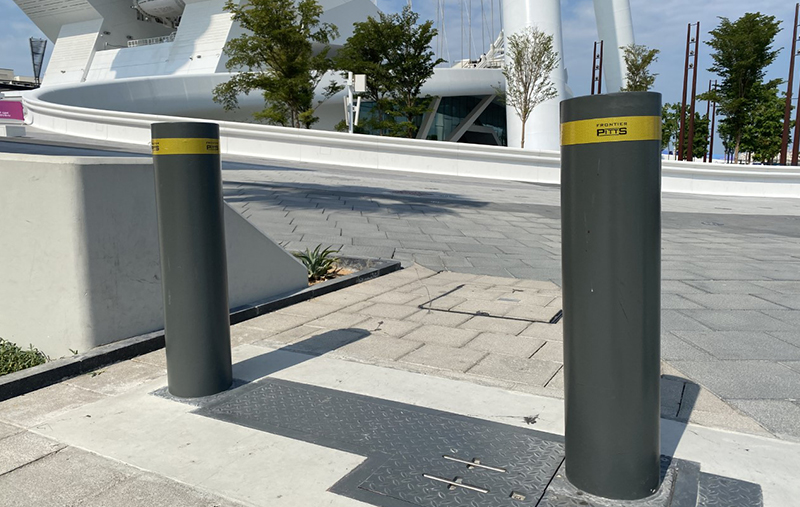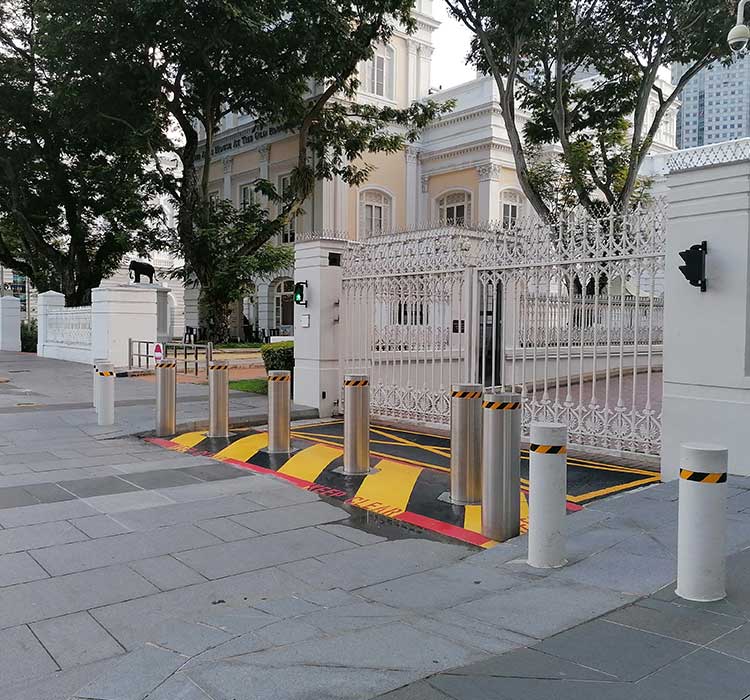In the realm of urban planning and traffic management, bollards have emerged as indispensable tools to enhance mobility, safety, and overall efficiency. These unassuming yet robust posts play a pivotal role in shaping the flow of vehicular and pedestrian traffic, contributing significantly to the overall urban infrastructure. In this article, we delve into the multifaceted aspects of bollards, exploring their diverse applications, with a focus on road blockers and how they collectively contribute to the enhancement of urban mobility.
The Rise of Bollards in Urban Planning
Bollards, originally designed as short, sturdy posts to guide traffic and prevent vehicle encroachment into pedestrian spaces, have evolved into versatile tools with applications ranging from security to aesthetics. These vertical posts are typically made of materials such as steel, concrete, or plastic, providing both visual delineation and physical obstruction.
The Varied Applications of Bollards
Traffic Control and Regulation
Bollards serve as effective tools for regulating vehicular and pedestrian traffic. Placed strategically at intersections, crosswalks, and other critical points, they guide traffic, preventing congestion and ensuring a smooth flow. Their presence helps delineate pedestrian zones, ensuring the safety of those on foot and creating a more organized urban landscape.
Enhancing Security with Road Blockers
Road blockers, a specialized type of bollard, are designed with an added emphasis on security. These heavy-duty barriers are often installed in high-security areas, critical infrastructure sites, and government buildings to prevent unauthorized vehicular access. Road blockers are instrumental in safeguarding against potential threats, such as vehicle-borne attacks, making them an integral component of modern urban security measures.
Pedestrian Safety and Urban Design
Bollards play a crucial role in creating pedestrian-friendly spaces. By defining walkways and separating them from vehicular traffic, these posts contribute to the safety and convenience of pedestrians. In urban design, bollards are often incorporated aesthetically, enhancing the overall visual appeal of public spaces while serving functional purposes.

Road Blockers: A Specialized Form of Bollards
Understanding Road Blockers
Road blockers, as the name suggests, are bollards designed specifically to impede vehicular movement. Unlike conventional bollards, road blockers are engineered to withstand significant impact, making them ideal for critical infrastructure protection and high-security environments. These blockers are often hydraulically operated, providing a rapid and effective response to security threats.
Key Features of Road Blockers
- Impact Resistance: Road blockers are constructed with robust materials to withstand high-velocity impacts, making them formidable deterrents against unauthorized vehicular access.
- Hydraulic Mechanism: Many road blockers feature hydraulic systems that enable swift deployment and retraction. This quick response is crucial in emergency situations where immediate security measures are required.
- Integration with Access Control Systems: Road blockers can be seamlessly integrated into access control systems, allowing for centralized management and coordination. This integration enhances overall security protocols and ensures a cohesive security infrastructure.
Bollards in Urban Mobility: A Synergistic Approach
Traffic Calming Measures
In bustling urban environments, managing traffic flow is a perpetual challenge. Bollards, strategically placed, serve as effective traffic calming measures. By narrowing roadways or creating designated lanes, these posts encourage drivers to adhere to speed limits, fostering a safer and more controlled traffic environment.
Flexible Urban Design Integration
The versatility of bollards extends to their integration within urban design schemes. Whether used for creating outdoor seating areas, defining pedestrian plazas, or enhancing the aesthetics of public spaces, bollards provide an adaptable solution that aligns with the evolving needs of urban landscapes.
Smart Traffic Management Systems
The advent of smart technologies has led to the development of intelligent traffic management systems that incorporate bollards. These systems leverage sensors and communication technologies to dynamically adjust traffic patterns, responding to real-time conditions. Bollards, as integral components, contribute to the agility of such systems, allowing for swift adjustments to optimize traffic flow.
Challenges and Considerations
Balancing Security and Accessibility
While road blockers enhance security, striking a balance between security measures and maintaining accessibility is crucial. Overly restrictive measures can impede the flow of legitimate traffic, causing inconvenience and potential economic impacts.
Aesthetics vs. Functionality
In urban design, the challenge lies in seamlessly integrating bollards without compromising aesthetics. Striking a balance between functionality and visual appeal is essential to ensure that these elements complement each other, contributing to a harmonious urban environment.
Future Trends and Innovations
Integration with IoT and AI
The future of urban mobility and security lies in the integration of bollards with the Internet of Things (IoT) and artificial intelligence (AI). Smart bollards equipped with sensors and AI algorithms can enhance their capabilities, allowing for real-time threat detection, adaptive traffic management, and improved overall efficiency.
Eco-Friendly Materials and Designs
As sustainability becomes a central focus in urban planning, the use of eco-friendly materials in bollard construction is gaining prominence. Innovations in design and materials aim to reduce the environmental impact while maintaining the durability and functionality of these traffic management tools.
Conclusion
Bollards, assuming diverse forms, have evolved into essential components that significantly influence both urban mobility and security. Their functions span from controlling traffic movement and improving pedestrian safety to acting as robust road blockers, making these inconspicuous structures pivotal in contemporary urban planning. In the ongoing transformation of cities, the incorporation of intelligent technologies, environmentally conscious designs, and a comprehensive security approach is poised to further enhance the significance of bollards. Collaborating with forward-thinking bollard supplier and road blocker supplier becomes crucial for cities aspiring to build sustainable and secure urban environments. Striking a harmonious balance between functionality, aesthetics, and innovation is imperative to fully unleash the potential of bollards in shaping the forthcoming landscape of urban mobility.

